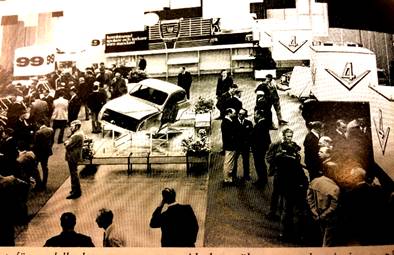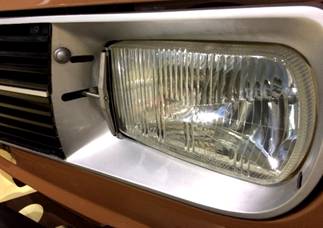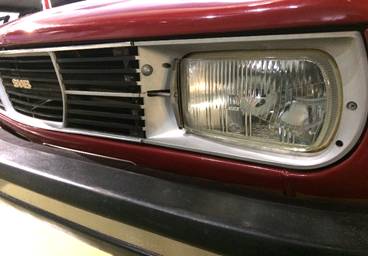Another first for Saab: Headlight wipe-washer system
HISTORICAL SAAB / Source: VIPS 1969-1970, No5 1970 -
FIRST CAR MANUFACTURER TO INTRODUCE A HEADLIGHT WIPE-WASH SYSTEM AS STANDARD EQUIPMENT.
Presentation to the motoring press
In August 1971, at the Technical Museum in Stockholm, SAAB presented its new wipe-wash headlight cleaning system scheduled to be introduced as standard equipment on all 1971 series production vehicles.
At the presentation Saab explained that to fully utilise modern, more effective headlights that were under development it was also considered important to be able to maintain the headlights in a clean condition during all driving conditions. The motoring press considered the feature as being a major step in improving night-time driving visibility for motorists and improved general road safety for all road users. Journalists from the MOTOR magazine praised Saabs engineers for their development work and indicated that SAAB would be a major contender for receiving the magazine’s annual Road Safety Award. 90% reduction in light intensity Tests at Saab had proved that as much as 90 % of light produced from the headlights is lost once the headlight glass has become completely covered with road dirt and grime etc. A driver’s night time view of the road ahead, could, during certain driving conditions, be reduced from 180 meters down to as little as only 60 meters, even less in more extreme driving conditions. Testing The first tests at SAAB started in 1967 concentrating on a design where only water was sprayed onto the front of the headlights. In some tests as many as 8 small jets were positioned spraying water onto the headlight glass. This design however didn´t produce the desired results Saab were looking for and development continued in search of a more robust and reliable system. After intensive testing a system was chosen incorporating rectangular headlights, individual wiper blades and headlight washer fluid jets. The fluid was needed to keep the blades well lubricated and to dissolve road grime, dirt etc that otherwise impaired the headlights beam of light to the road ahead. The headlights wipers operated at a frequency of 40 wipes/minute and required the need for a larger 3 litre washer fluid reservoir. The wiper blades were required to withstand 1,5 million sweeps across the headlight surface which corresponded to a service life of 120 000 km. Removal of individual headlight assemblies and wiper blades etc was relatively easy due to most mechanical components being positioned and secured to the rear of the front grill assembly. In due course the headlight washer system became incorporated with cleaning of the windscreen. Some Interesting features of Saabs headlight cleaning design: The wiper blades:
- Return to a position where there is little chance of them becoming iced up.
- Are protected from exterior forces that could damage the blades e.g. road grit etc
- Easy to service.
- The cleaned area of the headlight glass is 94 % of the total glass frontal area.
- Uniform cleaning of both headlights - full photometric compliance according to FM.ECE legislation.
- Embossed text to be on the inside of the glass to maximise cleaning.
- The electric motor is positioned so as not to be damaged upon a light collision.
- The electric motor circuit includes a safety fuse that blows upon the wipers becoming
blocked. For their design Saab was awarded a Gold medal by the Swedish Automobile Association.


